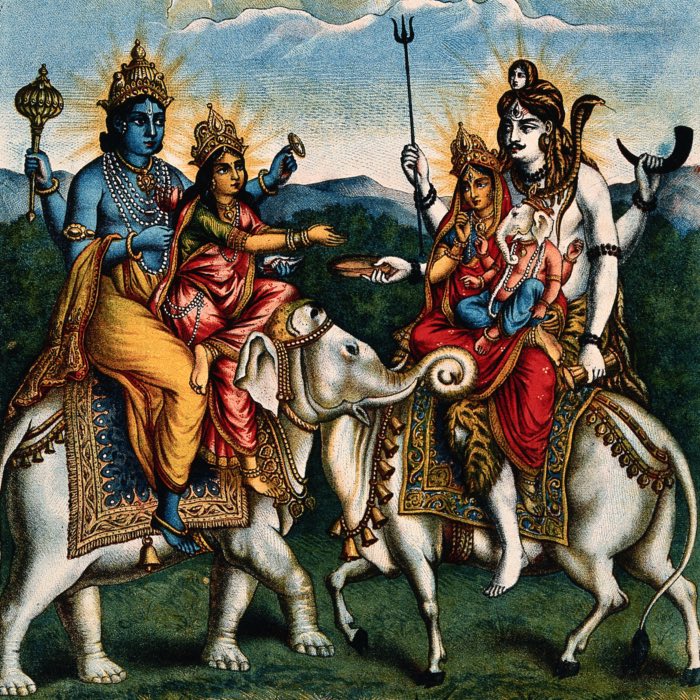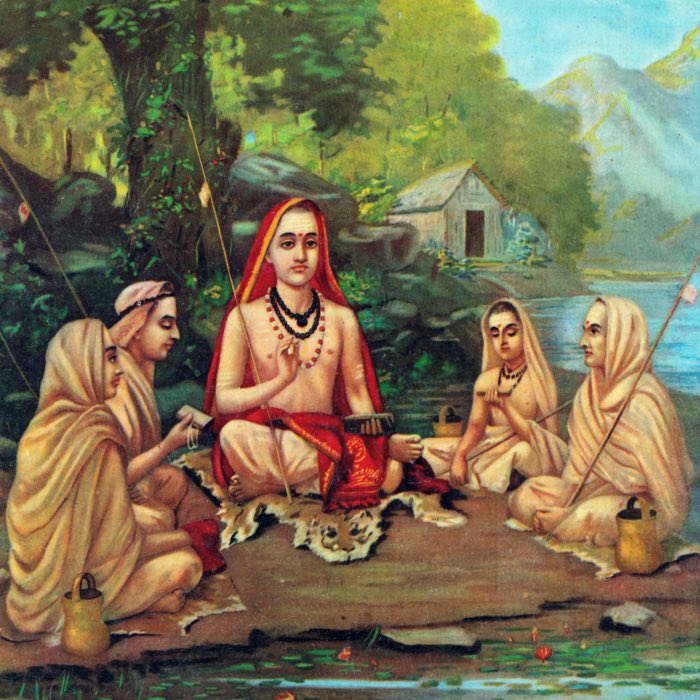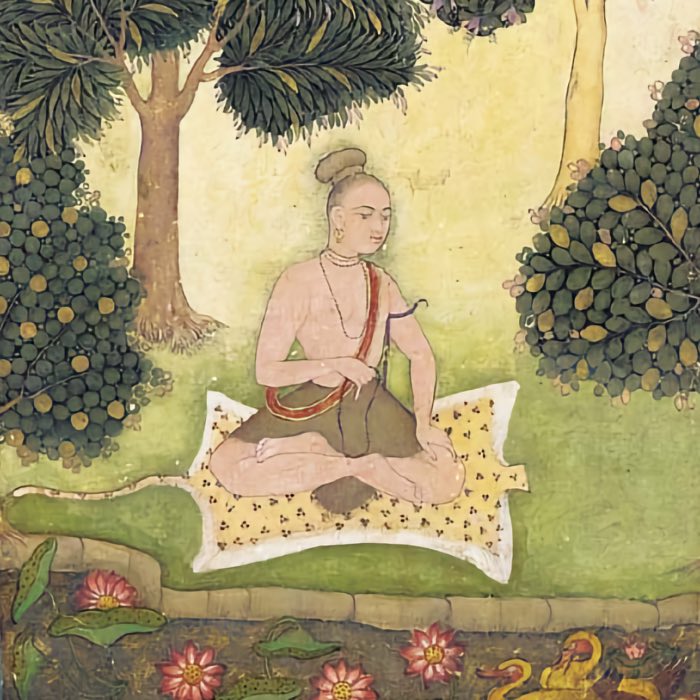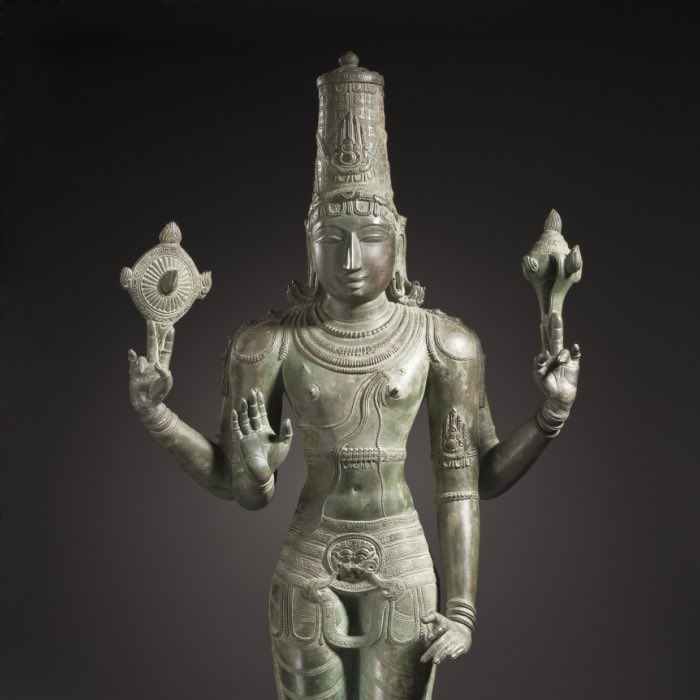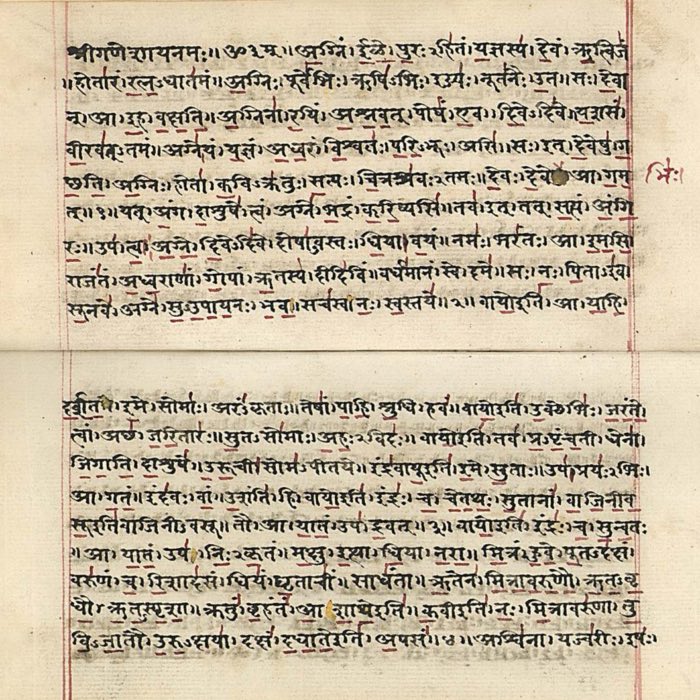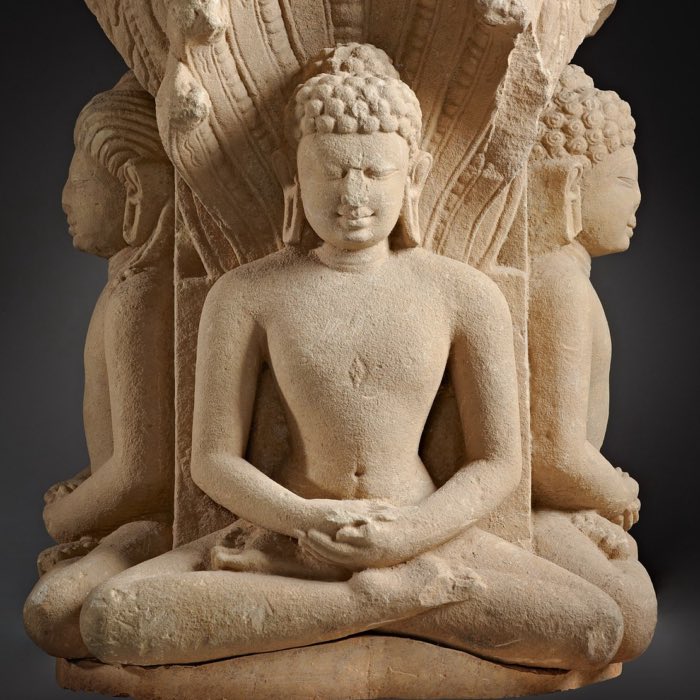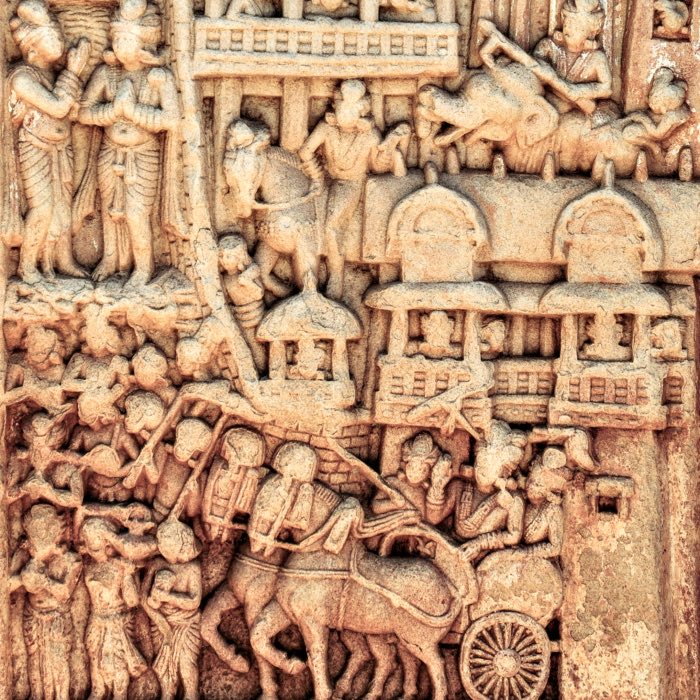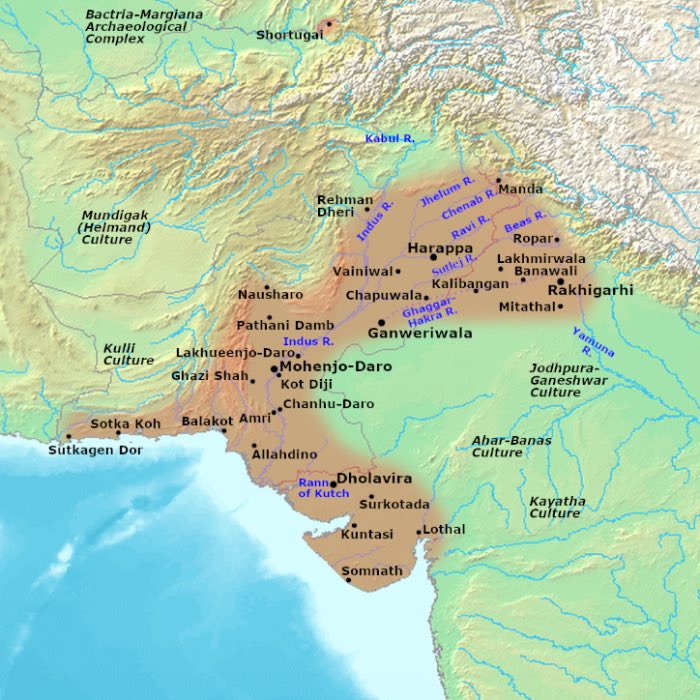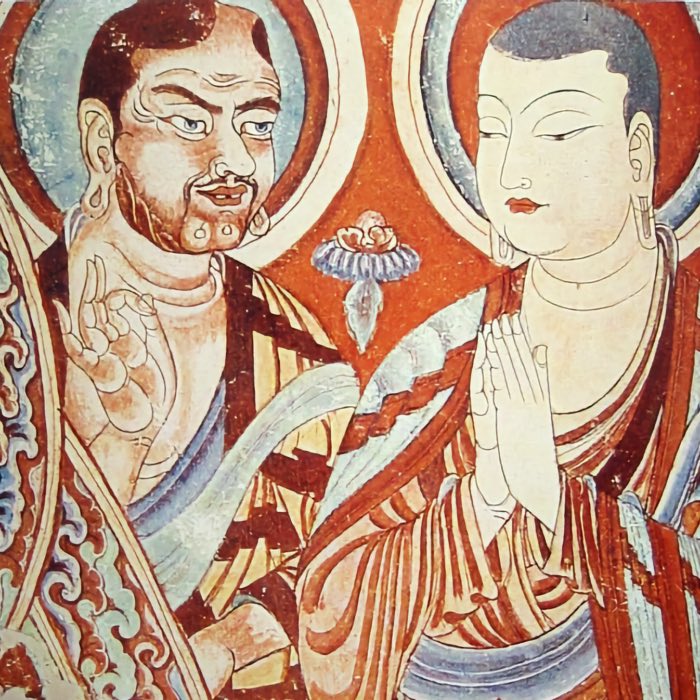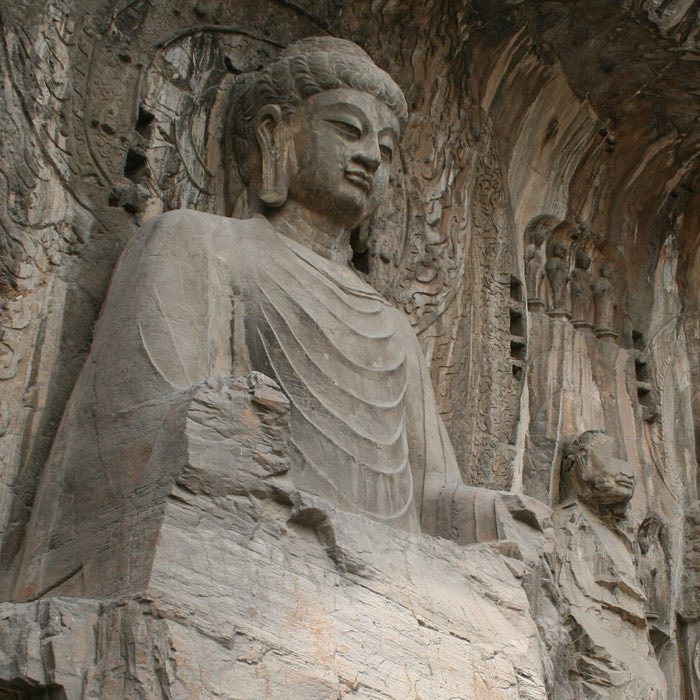Weekend Stories
I enjoy going exploring on weekends (mostly). Here is a collection of stories and photos I gather along the way. All posts are CC BY-NC-SA licensed unless otherwise stated. Feel free to share, remix, and adapt the content as long as you give appropriate credit and distribute your contributions under the same license.
diary · tags · RSS · Mastodon · flickr · simple view · grid view · page 33/51
Brahman: The ultimate reality in Hindu philosophy
In Hindu philosophy, Brahman is the foundational metaphysical concept representing the ultimate, unchanging, and infinite reality that underlies the cosmos. Unlike deities or gods worshipped in various forms, Brahman is formless, eternal, and beyond sensory perception. Philosophers from different schools of Vedanta have extensively debated and interpreted the nature of Brahman, shaping the spiritual discourse of Hinduism for millennia. This post briefly explores the historical development, philosophical interpretations, and theological nuances of Brahman in Hindu thought.
Vedanta: Philosophy of the Upanishads
Vedanta, meaning ‘end of the Vedas’ in Sanskrit, refers to a collection of philosophical traditions that explore the nature of reality, the self (ātman), and the ultimate principle (brahman). Rooted in the Upanishads, which are the concluding portions of the Vedic literature, Vedanta evolved into one of the most influential schools of Indian philosophy. While initially a metaphysical inquiry into the unity of the individual and the cosmos, Vedanta developed into several distinct schools, each offering unique interpretations of the core texts and concepts. In this post, we briefly take a look at the most important aspects of Vedanta, its historical origins, core philosophical concepts, principal schools, and its role in Hindu religious practice.
The philosophical roots of Yoga
Yoga, derived from the Sanskrit root yuj, meaning ‘to join’ or ‘to unite’, is both a philosophical system and a set of physical, mental, and spiritual practices aimed at achieving self-realization and liberation (mokṣa). While modern popular notions of yoga emphasize its physical postures (āsanas), its origins lie in ancient Indian philosophical traditions, where it was primarily conceived as a disciplined path toward spiritual enlightenment. Over the centuries, yoga has evolved into various forms and schools, each emphasizing different aspects of practice and philosophy.
Hinduism: A historical overview
Hinduism, one of the oldest surviving religious traditions in the world, is characterized by its vast diversity of beliefs, practices, and philosophies. Its roots can be traced back to the early Vedic period (circa 1500 BCE) and possibly even earlier to the prehistoric cultures of the Indus Valley Civilization. Unlike most world religions, Hinduism lacks a single founder, a unified creed, or a central religious authority. Instead, it evolved over millennia through the integration of diverse cultural and philosophical influences in the Indian subcontinent. In this post, we explore the historical development of Hinduism, briefly touch its core texts, and take a look at its key philosophical ideas.
The Vedas: Foundations of Indian civilization and spiritual thought
The Vedas, ancient texts composed in the Sanskrit language, stand as the foundational scriptures of Indian civilization and the oldest layer of Hindu religious literature. Composed over a period stretching from approximately 1500 BCE to 500 BCE, the Vedas encapsulate the spiritual, ritualistic, and philosophical ethos of the Vedic tradition, a cornerstone of Indian culture. Their composition marked the beginning of the Vedic Age, a formative period in South Asian history that shaped not only religious practices but also social structures, linguistic developments, and philosophical inquiry.
Indian philosophy: An overview of ancient schools and concepts
Ancient Indian philosophy encompasses a vast and diverse body of knowledge, addressing fundamental questions about the nature of reality, self, knowledge, ethics, and liberation. Unlike many other philosophical traditions, Indian philosophy has a deeply practical orientation, with most schools concerned not merely with abstract speculation but with guiding individuals toward spiritual liberation (mokṣa). This post sketches a brief overview of the philosophical landscape of ancient India, structuring the topics covered in the major schools of thought and their core doctrines.
The Second Urbanization in ancient India
The Second Urbanization refers to a pivotal historical period in the Indian subcontinent, roughly dated between 600 and 300 BCE, when urban life re-emerged on a significant scale after a long phase of predominantly rural and pastoral societies following the decline of the Indus Valley Civilization. This era saw the rise of new cities, trade networks, social structures, and intellectual currents, laying the groundwork for transformative religious and philosophical developments — including early Buddhism and Jainism.
The development of Indian civilization
The development of Indian civilization is a cornerstone in the history of human culture. Emerging in the fertile plains of the Indus and Ganges rivers, it laid the groundwork for some of the most profound cultural, religious, and intellectual advancements in human history. Like Mesopotamia and Egypt, whose civilizations also arose along fertile river systems such as the Tigris, Euphrates, and Nile, and like China, rooted in the Yellow and Yangtze Rivers, Indian civilization demonstrates how geography shaped early societies. Indian civilization, dating back to around 3300 BCE with the Indus Valley Civilization, evolved uniquely while interacting with neighboring cultures and adapting to dynamic historical contexts. Its trajectory reflects a balance of continuity and change, influenced by geography, migration, and innovation.
The Silk Road: A network of ancient trade, cultural exchange, and global transformation
The Silk Road, a vast network of trade routes connecting East Asia to the Mediterranean, played a critical role in shaping the economic, cultural, and political history of the ancient world. Spanning over 6,000 kilometers and linking regions as diverse as China, Central Asia, Persia, India, Mesopotamia, and the Roman Empire, the Silk Road facilitated an unprecedented exchange of goods, ideas, technologies, and religious beliefs. Its significance lies not only in the commodities that were traded but also in the profound cultural interactions that transformed the civilizations it connected.
Alongside other ancient trade routes, such as the Lapis Lazuli Route and the Amber Road, the Silk Road provides compelling evidence of a dynamic flow of commerce and ideas in ancient times. Driven by the pursuit of wealth and sustained by the efforts of countless traders, merchants, and explorers, these routes inadvertently created a vast network that connected the known world far more extensively than might initially be imagined. While the speed and scale of this exchange were vastly different from those of modern global trade, the underlying principles of cultural and economic interaction remain remarkably similar. The exchange of goods, knowledge, technologies, and ideas had a lasting impact on the civilizations along these routes, shaping their development in ways that continue to resonate in modern history.
In this post, we therefore take a closer look at the historical development of the Silk Road and how it facilitated the exchange of key goods, ideas, and cultural practices across Asia, the Middle East, and Europe. .
Emergence of Buddhism in China
Buddhism, originating in India around the 5th century BCE, began to spread into China during the Han dynasty (206 BCE–220 CE). Over the next several centuries, it evolved into a distinctly Chinese form of spirituality by blending with indigenous philosophical systems such as Daoism and Confucianism. The emergence of Buddhism in China represents one of the most significant cultural and intellectual transformations in Chinese history, influencing art, literature, governance, and daily life.
